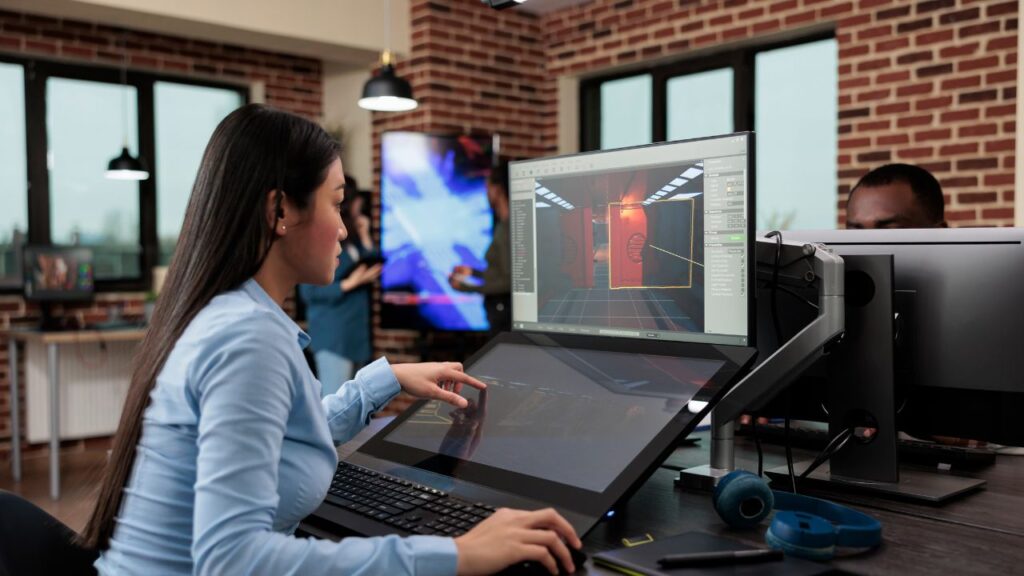Pong brings back memories of classic arcade gaming, and many developers want to recreate this simple yet addictive game. Learning to create Pong with Python gives beginners hands-on experience with game development concepts like collision detection, player input, and game loops. This timeless table tennis simulation makes the perfect first project for anyone starting their journey into game programming.
Building Pong teaches essential programming skills without overwhelming complexity. The game uses basic elements like paddles, a ball, and scoring systems that help new coders understand how games work behind the scenes. Python makes this process even easier with its simple syntax and powerful libraries.
This guide walks through creating a fully functional Pong game from scratch. Readers will learn how to set up the game environment, handle player controls, and implement the core mechanics that make Pong so engaging. By the end, they will have a working game and solid foundation for more advanced projects.
What Python Tools Do You Need to Build Pong?
Before you start coding your Pong game, you need to pick the right tools and set up your game window. The main choice is between Pygame and Turtle, with each offering different benefits for game creation.
Which Python Library Should You Choose for Pong?
Pygame is the most popular choice for making Pong games. It gives you better control over graphics and runs faster than other options.
Turtle comes built into Python, so you don’t need to install anything extra. It’s easier to learn but runs slower than Pygame.
Most beginners should start with Pygame because:
- It handles graphics better
- Games run smoother
- You can add sound effects later
- More tutorials are available online
To install Pygame, players need to open their command prompt and type:
pip install pygame
How Do You Create the Perfect Game Window?
The game window is where all the action happens. Your window needs to be the right size and color for a good Pong experience.
Most Pong games use a black background with white paddles and ball. This matches the original arcade game from the 1970s.
Here’s what you need to set up:
- Window width: 800 pixels works well
- Window height: 600 pixels is a good choice
- Background color: Black or dark blue
- Window title: “Pong Game” or something fun
The window should stay open until the player closes it. You also need to set up a game loop that keeps everything running smoothly.
What Size Should Your Paddles and Ball Be?
The paddles and ball are the most important parts of your Pong game. Getting their size right makes the game fun to play.
Paddle dimensions should be:
- Height: 100 pixels
- Width: 10 pixels
- Color: White or bright green
Ball specifications:
- Size: 15×15 pixels (square shape)
- Color: White or yellow
- Starting position: Center of screen
The paddles go on the left and right sides of the screen. Leave about 50 pixels of space between each paddle and the screen edge.
Your ball starts in the middle and moves toward one of the players. The speed should be slow enough that beginners can hit it but fast enough to be exciting.
How Does Pong Game Logic Actually Work in Python?
The game logic handles player movement, ball physics, and scoring rules that make Pong fun to play. These three core systems work together to create the classic arcade experience.
How Do You Control the Paddles in Pong?
Player controls let users move their paddles up and down on the screen. The game needs to track when players press keys and move the paddles smoothly.
Most Pong games use simple key bindings for movement. Player 1 typically uses W and S keys while Player 2 uses the up and down arrow keys.
The paddle movement code checks if keys are pressed each frame. When a key is active, the paddle moves a set distance in that direction.
if key_pressed == 'w':
paddle1_y -= paddle_speed
elif key_pressed == 's':
paddle1_y += paddle_speed
Boundary checking stops paddles from moving off screen. The code compares paddle position to screen edges before allowing movement.
Players need responsive controls that feel smooth. Setting the right paddle speed makes the game playable but not too easy.
What Makes the Ball Move and Bounce Correctly?
Ball movement uses simple physics with horizontal and vertical speed values. The ball position updates each frame by adding these speed values to its current location.
Collision detection checks if the ball hits paddles or walls. When the ball touches a paddle, it reverses horizontal direction and may change vertical angle.
Wall collisions work differently than paddle hits. Top and bottom walls reverse the ball’s vertical speed but keep horizontal movement the same.
The ball bounces off paddles at different angles based on where it hits. Center hits send the ball straight while edge hits create sharper angles.
ball_x += ball_speed_x
ball_y += ball_speed_y
if ball_hits_paddle:
ball_speed_x *= -1
Speed increases can make games more exciting. Some versions boost ball speed after each paddle hit or certain time periods.
How Does Scoring Work in Pong Games?
The scoring system awards points when the ball passes a paddle and reaches the screen edge. Left side goals give points to the right player and right side goals score for the left player.
Score tracking uses simple variables that increase by one each time a goal happens. The game displays these numbers on screen so players can see the current score.
Game reset happens after each goal. The ball returns to center screen and launches toward the player who just got scored on.
Most Pong games end when one player reaches a target score like 5 or 10 points. The win condition checks scores each frame and shows a victory message when someone wins.
Some versions add serve mechanics where players press a key to launch the ball after goals. This gives players time to get ready for the next round.
The game over screen typically shows the final score and lets players restart for another match.



